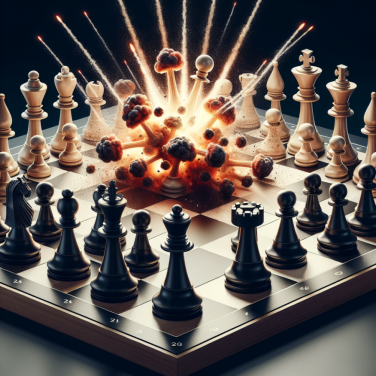Leveling Up: Advanced Tips to Help Beginners Refine Their Ice Skating Skills
After mastering the very basics of ice skating, it's time to take your skills to the next level. This process involves refining your techniques, honing your balance and control, and continually challenging yourself to do better each time you step onto the ice. Here are some advanced tips to help beginners refine their ice skating skills.
1. Strengthen Your Core: The power in ice skating comes from your core, thus it's beneficial to strengthen these muscles. Incorporate core workouts into your exercise routine. Planks, crunches, push-ups and yoga poses can help to enhance your balance, endurance, and overall performance on ice.
2. Improve Your Endurance: Skating can be tiring, especially when you're trying to learn new tricks or refine your skills. High-intensity interval training (HIIT) exercises can help improve both your endurance and your speed. HIIT workouts involve periods of intense exercise followed by short rest periods. This can mirror the intensity of an ice-skating session.
3. Practice Edge Control: Mastering edge control is essential to become an efficient ice skater. The inside and outside edges of your skating blades help to control your movement. Practice maneuvering and balancing on each edge to develop your skills.
4. Learn to Stop Correctly: Being able to stop effectively and quickly is crucial in ice skating. There are various stopping techniques in ice skating, such as the snowplow stop, the T-stop, and the hockey stop. Practice each one until you feel comfortable and can perform them effortlessly.
5. Work on Cross-overs: Cross-overs are not only a way to increase speed but also a stylish way to navigate corners. To do them, you need to cross one foot over the other while maintaining your balance.
6. Incorporate Swizzles: Also known as the 'fish', the swizzle is a basic move that helps to improve balance and control. It involves moving your feet in and out while keeping your ankles straight. This can improve your footwork and coordination on the ice.
7. Gain Flexibility: Flexibility lets you make certain movements with ease. Stretches before and after your skating session can help improve flexibility, reduce muscle stiffness, and prevent injuries.
Remember, it's essential to maintain a positive attitude and perseverance throughout your ice skating journey. Practice makes perfect, and with time, you will continually improve and refine your skills.
Read also:
Deciphering the Legacy of Golfers: Who Has Won the Most Majors?
Laying the Foundation: Basic Techniques for Ice Skating Novices
Starting with the right pair of ice skates, one of the most crucial decisions a novice skater can make is their choice of ice skates. When beginning, it's best to opt for skates that have been specially designed for beginners which can offer the support and comfort needed. This helps to cushion your feet from the hardness of the ice and keeps your ankles supported, reducing the chances of injury.
Adding onto support, it's critical to ensure your safety by investing in protective gear. This includes a certified helmet, knee, elbow pads and gloves to protect from falls on the hard ice surface. Falls are a compulsory part of the ice skating learning process, so it's best to be prepared.
Maintaining a correct posture plays a significant role in ice skating. Basic posture includes flexing your knees and leaning slightly forward. This posture helps maintaining the balance as the center of gravity is shifted to the midline of the body. As a beginner, it’s crucial to build strong skills around your ice skating posture so as to avoid any potential injury and to skate efficiently.
Another fundamental aspect of being a good ice skater is learning how to stop. To stop, you need to bend your knees, turn your feet inwards, and press out on your heels in a fast, smooth motion. This technique may seem difficult initially, but it is essential to safely navigate the ice rink.
Gliding is another basic technique that beginners should master. You should learn to glide on one foot before proceeding to the other, this should be done by shifting your weight from one foot to another. Lift your foot slightly off the ice and move forward.
Next, turning is a necessary skill needed for ice skating. Practicing turning around a stationary object like a cone can help enhance your skills. Start with large rounds and slowly decrease the circumference as you become more confident.
Edges are a major part of ice skating and it’s important to practice using them. Skating on the inside edge means leaning towards the inside of the foot, while the outside edge involves leaning towards the outside of the foot. Balancing on the edges helps in performing different maneuvers.
Lastly. consistency is key when it comes to mastering ice skating. The more time you spend on the ice, the more comfortable you will become. It takes time and practice to build your skills and achieve your skating goals. So, lace up those skates, practice often, and enjoy the process.




